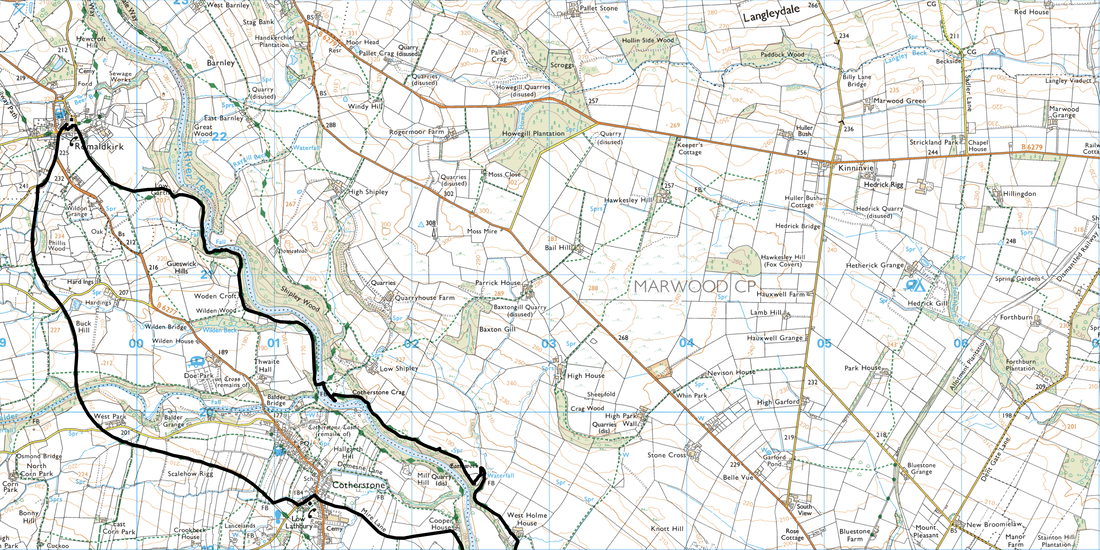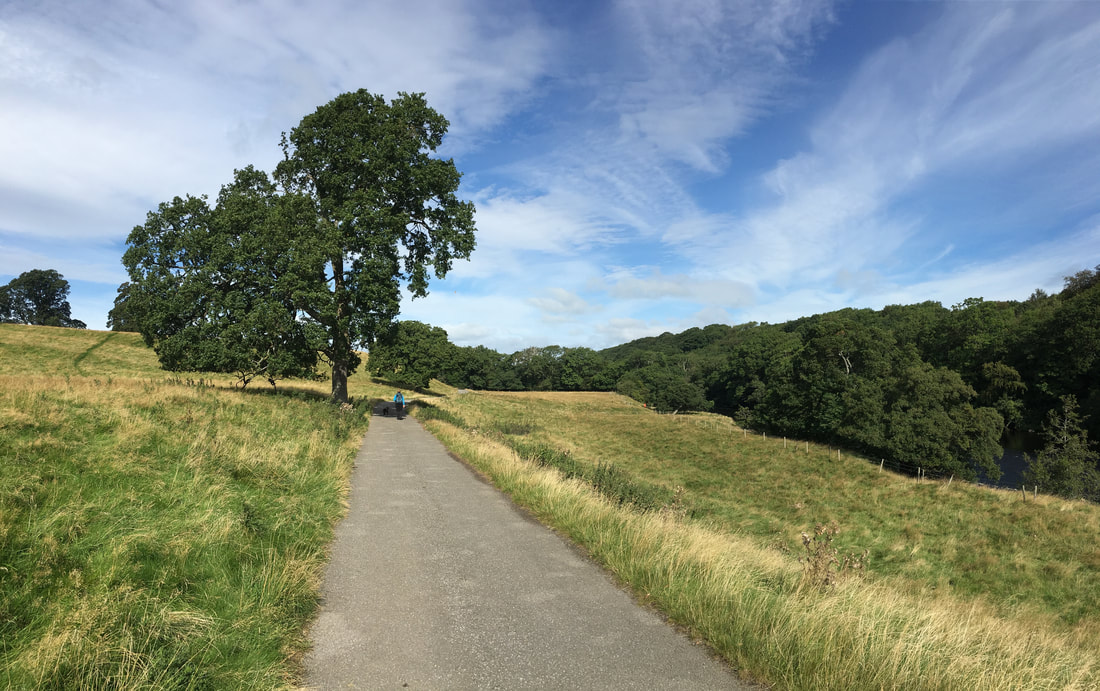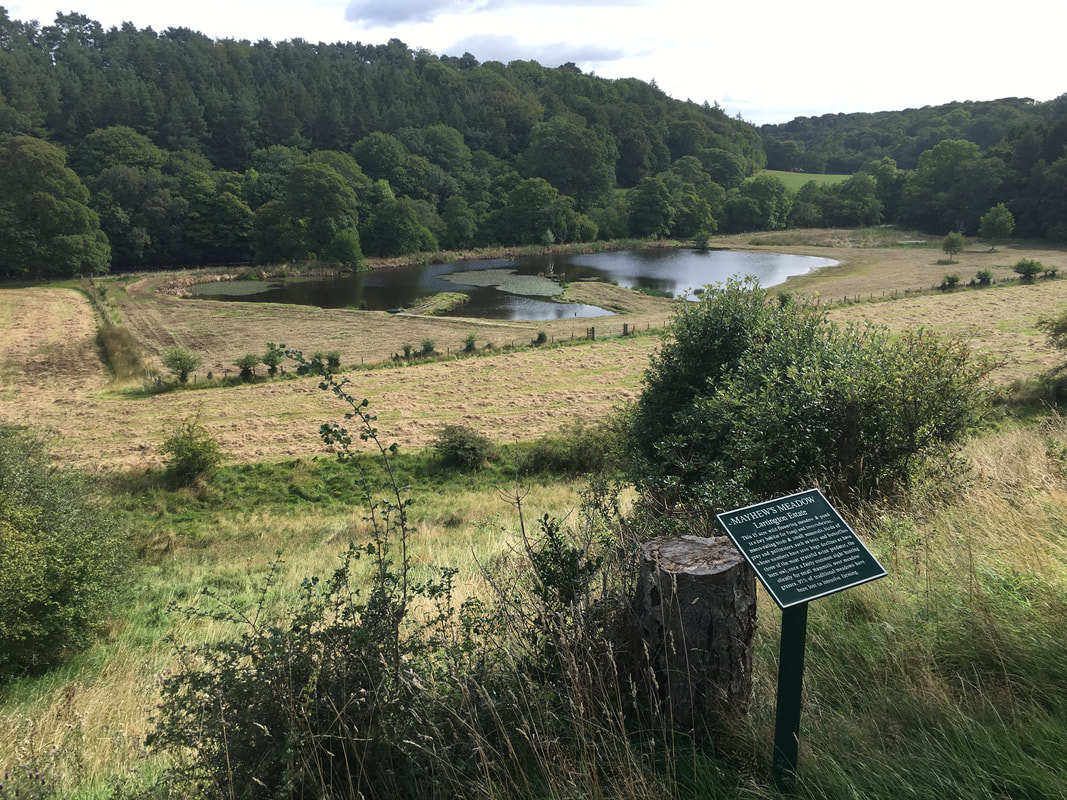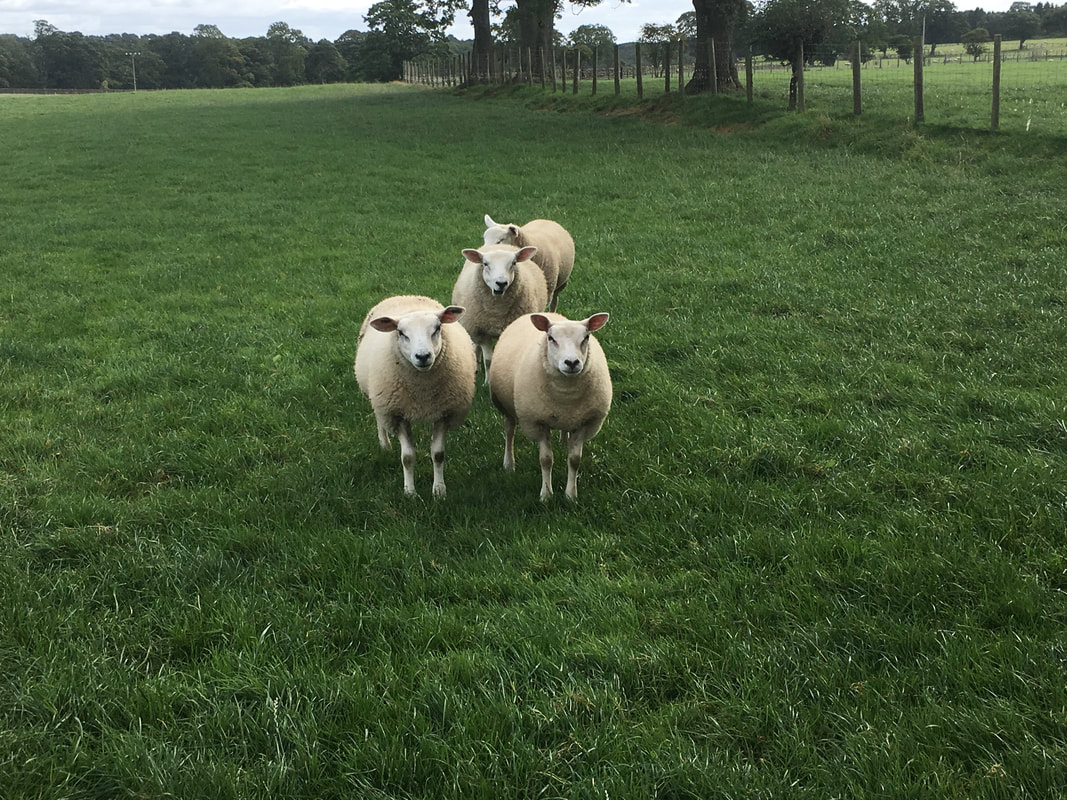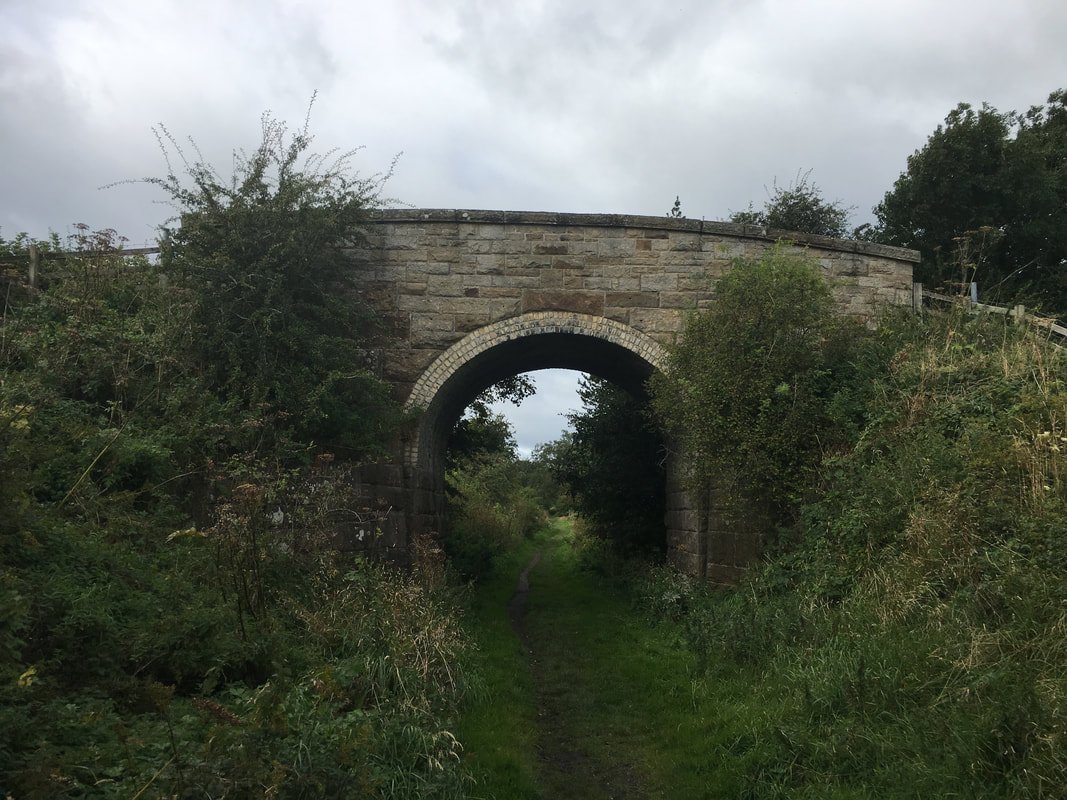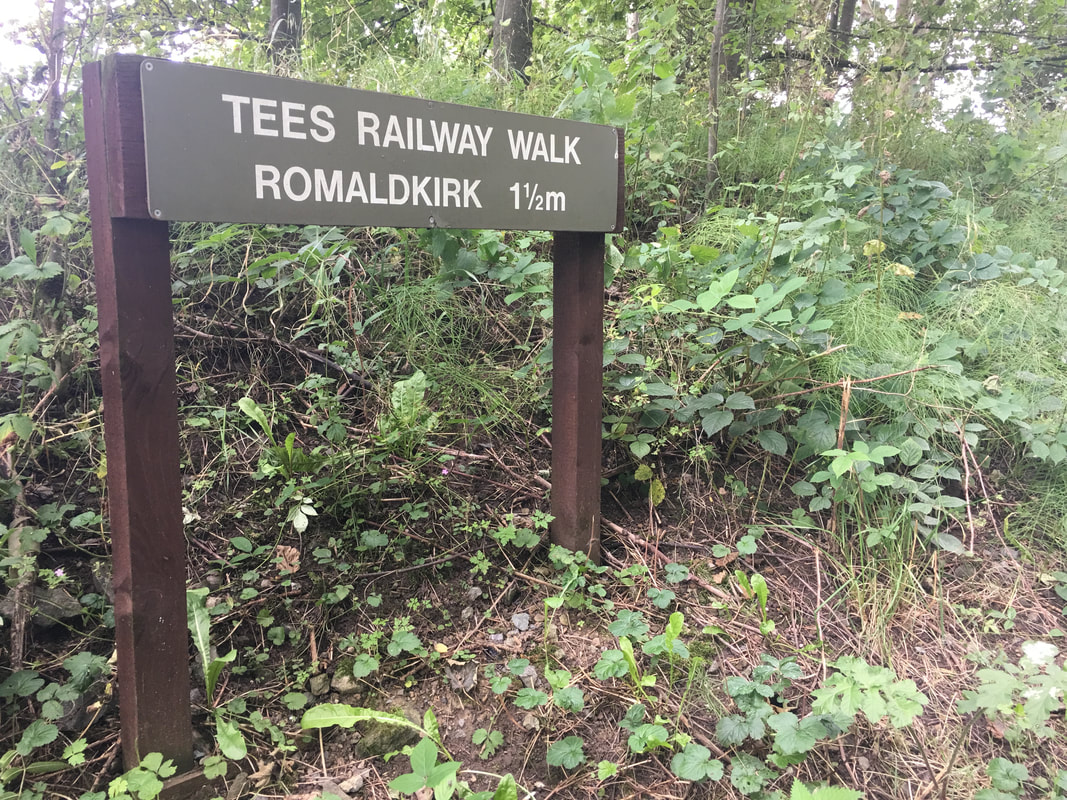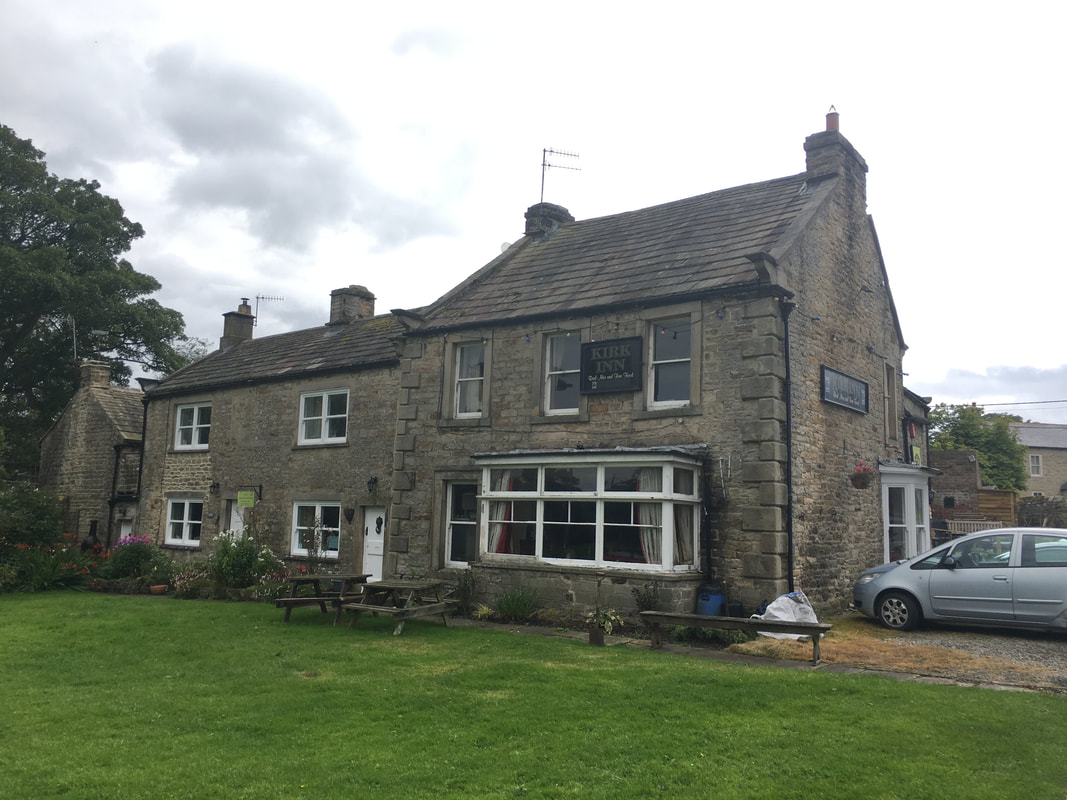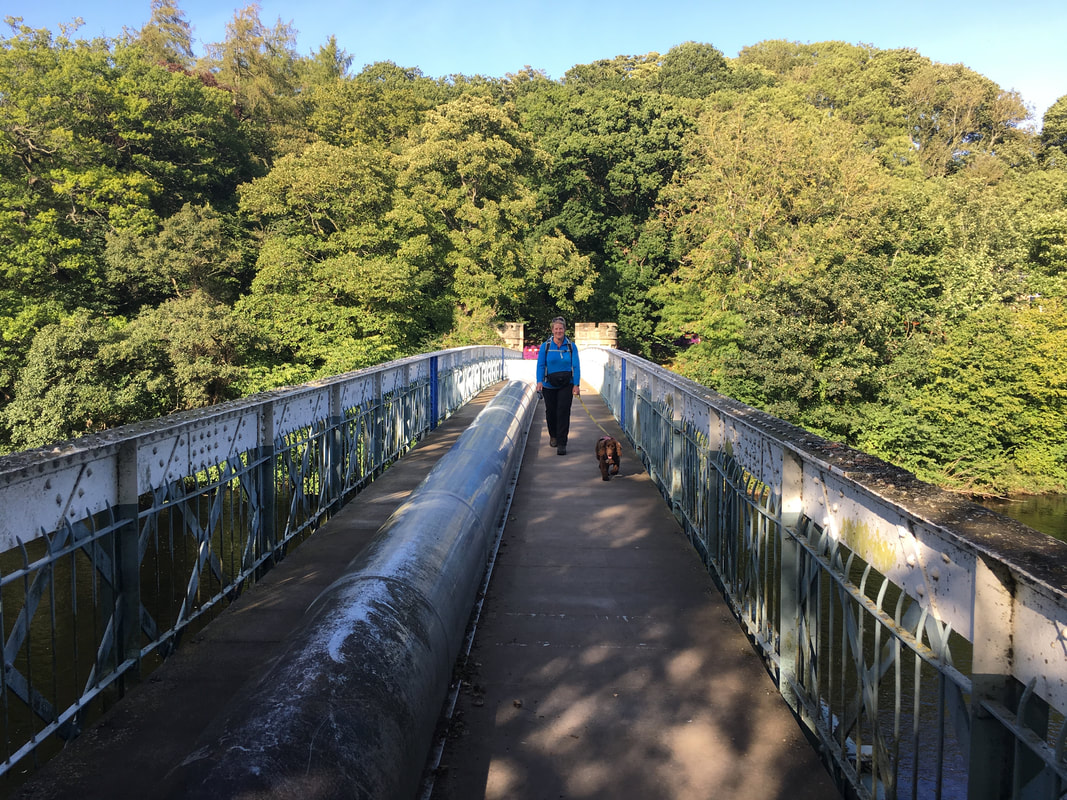Barnard Castle, Cotherstone & Romaldkirk - Thursday 5 September 2019
Route
Barnard Castle - Pecknell Wood - Mayhew's Meadow - Cotherstone - Romaldkirk - Balder Pipe Bridge - Tees Bank - Barnard Castle
Parking
Plenty of parking in Barnard Castle both free & Pay & Display
Mileage
13.1 miles
Terrain
Riverside & woodland paths
Weather
A mixture of sunny spells, fresh breezes plus a light rain shower.
Time Taken
6hrs 50mins
Total Ascent
1725ft (526m)
Map
OL31 North Pennines (Teesdale & Weardale)
Walkers
Dave, Angie & Fudge
Barnard Castle - Pecknell Wood - Mayhew's Meadow - Cotherstone - Romaldkirk - Balder Pipe Bridge - Tees Bank - Barnard Castle
Parking
Plenty of parking in Barnard Castle both free & Pay & Display
Mileage
13.1 miles
Terrain
Riverside & woodland paths
Weather
A mixture of sunny spells, fresh breezes plus a light rain shower.
Time Taken
6hrs 50mins
Total Ascent
1725ft (526m)
Map
OL31 North Pennines (Teesdale & Weardale)
Walkers
Dave, Angie & Fudge
|
GPX File
|
| ||
If the above GPX file fails to download or presents itself as an XML file once downloaded then please feel free to contact me and I will send you the GPX file via e-mail.
Walk Description
The direction sign at the Deepdale Aqueduct.
We started from our Caravan Site west of Barnard Castle however the walk can also be commenced from the town where there is plenty of parking.
We were off in the direction of Cotherstone which follows a good track on The Teesdale Way along the western shore of the River Tees.
We started from our Caravan Site west of Barnard Castle however the walk can also be commenced from the town where there is plenty of parking.
We were off in the direction of Cotherstone which follows a good track on The Teesdale Way along the western shore of the River Tees.
Continuing along the track above the River Tees on the Teesdale Way - Pecknell Wood is ahead
Still on the track the route heads through Pecknell Wood
The track is soon left and we then continued on through the woodland.
To the right and partly hidden by the undergrowth, was the large stone structure of the railway viaduct that used to cross the river at this point.
To the right and partly hidden by the undergrowth, was the large stone structure of the railway viaduct that used to cross the river at this point.
Mayhew's Meadow on the Lartington Estate
The area consists of 15 acres of wild flowering meadow and pond. It is a vital habitat for fungi, invertebrates, insect-eating birds, small mammals, birds of prey, and pollinators such as bees and butterflies.
The area consists of 15 acres of wild flowering meadow and pond. It is a vital habitat for fungi, invertebrates, insect-eating birds, small mammals, birds of prey, and pollinators such as bees and butterflies.
Needs a bit of work
This little mob were very inquisitive
St Cuthbert's Church in Cotherstone
Passing through a lovely old railway bridge near Romaldkirk
West of Cotherstone we joined the Tees Railway Path
The Tees Valley Railway was the remnant of a scheme for a line from Barnard Castle to Alston. It was opened in 1868 by an independent company and was taken over by the North East Railway in 1882. The line closed in 1964. Part of the line is now a lovely 6 mile walk from Lonton near Middleton-in-Teesdale to Lartington near Barnard Castle.
The Tees Valley Railway was the remnant of a scheme for a line from Barnard Castle to Alston. It was opened in 1868 by an independent company and was taken over by the North East Railway in 1882. The line closed in 1964. Part of the line is now a lovely 6 mile walk from Lonton near Middleton-in-Teesdale to Lartington near Barnard Castle.
This picture just proves what a small world we live in. Approaching Romaldkirk who should we bump into but Michelle & Andrew who we first met when we walked the Coast to Coast in 2016.
Entering the delightful village of Romaldkirk
The Rose & Crown in Romaldkirk where we partook of a nice cool drink before heading off back to Barnard Castle
That's better - we didn't eat at The Rose & Crown but the menu looked very nice if a tad on the pricey side
The medieval stocks on the village green in Romaldkirk.
Fudge had been a good boy today therefore there was no need to put him in them.
Fudge had been a good boy today therefore there was no need to put him in them.
The Kirk Inn at Romaldkirk.
Alfred Wainwright stayed here during his Pennine Journey walk of 1938.
Alfred Wainwright stayed here during his Pennine Journey walk of 1938.
The church of St Romald in Romaldkirk
We were now entering the parish of Hunderthwaite - the hamlet lies about a mile to the west
The River Tees
The path continues to hug the western bank of the Tees and we would shortly be crossing over to the eastern side.
Crossing the Balder Pipe Bridge over the River Tees near Cotherstone
The 3 and a half mile walk from here to Barnard Castle was a pure delight.......
...... and there was nobody here
Barnard Castle from the Deepdale Aqueduct
Crossing the Deepdale Aqueduct
A closer view of Barnard Castle showing the impressive round tower
The castle itself dates back to Norman times and was built by Bernard Balliol between 1112 – 1132. His father, Guy de Balliol, came to England with William the Conqueror’s invading army and, around 1093 was given the land by William Rufus. The fortress – ‘Bernard’s Castle’ – like the Roman forts before it, became a focus for settlement and the town of Barnard Castle developed around it. The Castle remained an important stronghold until 1569 and the ‘Rising of the North’ saw it besieged by the supporters of Mary Queen of Scots. For eleven days Sir George Bowes of Streatlem held the fort for his sovereign, Elizabeth I, before being forced to surrender it.
The castle itself dates back to Norman times and was built by Bernard Balliol between 1112 – 1132. His father, Guy de Balliol, came to England with William the Conqueror’s invading army and, around 1093 was given the land by William Rufus. The fortress – ‘Bernard’s Castle’ – like the Roman forts before it, became a focus for settlement and the town of Barnard Castle developed around it. The Castle remained an important stronghold until 1569 and the ‘Rising of the North’ saw it besieged by the supporters of Mary Queen of Scots. For eleven days Sir George Bowes of Streatlem held the fort for his sovereign, Elizabeth I, before being forced to surrender it.
